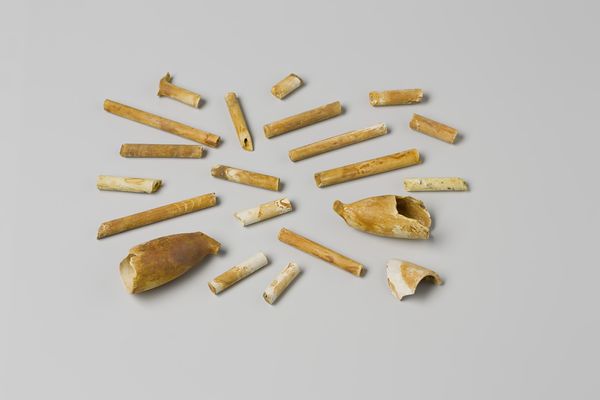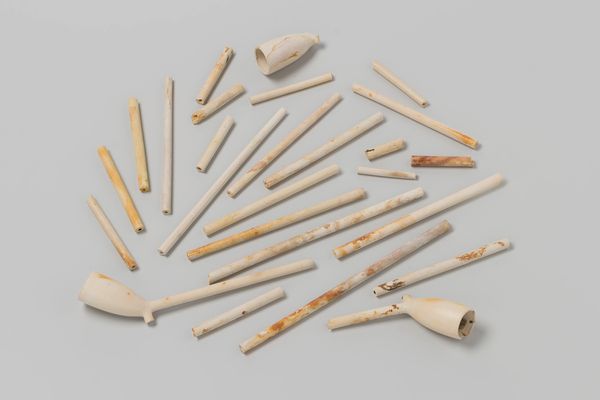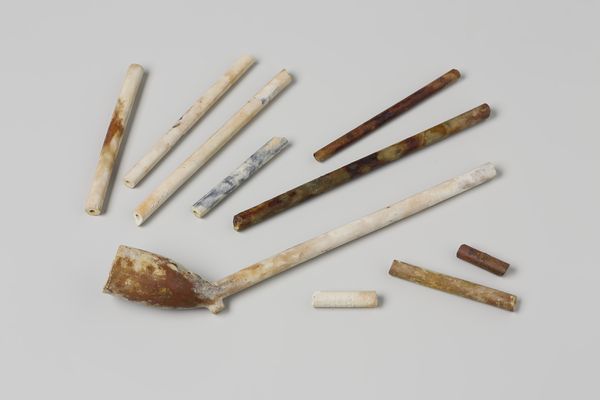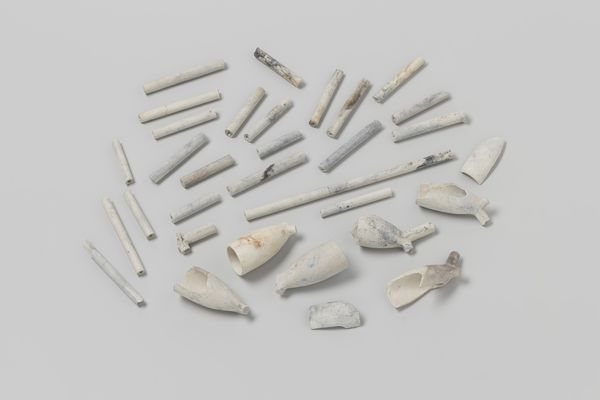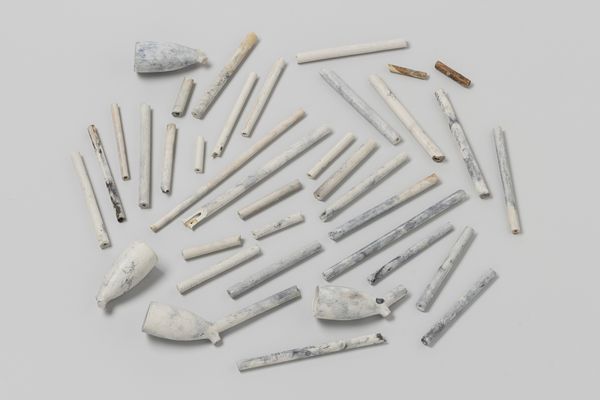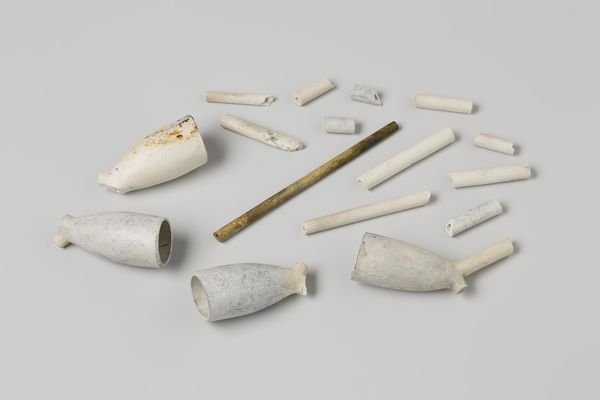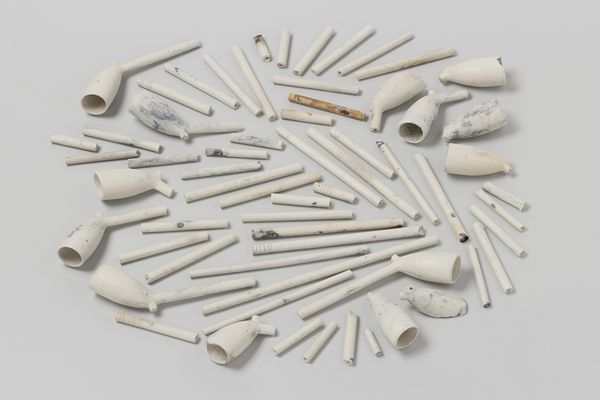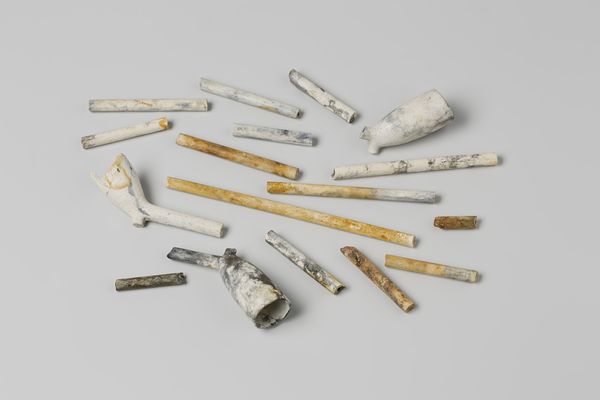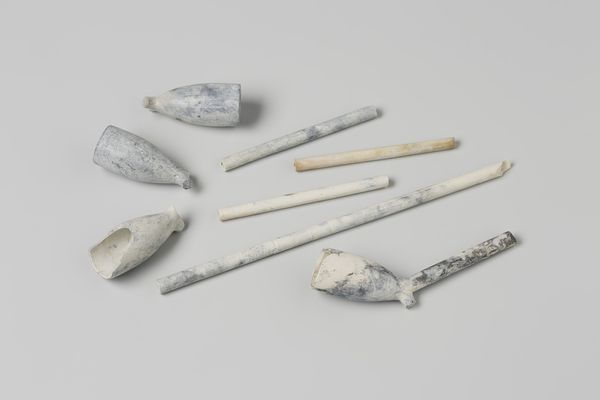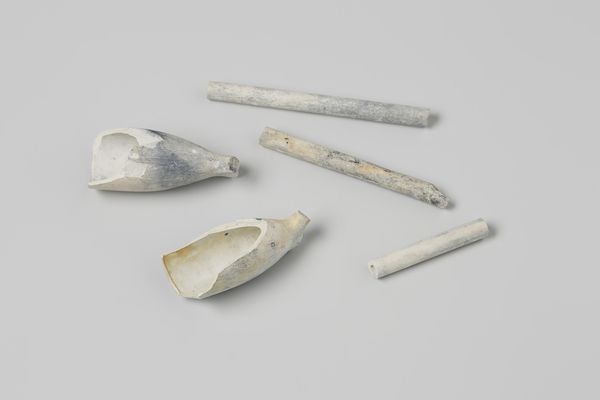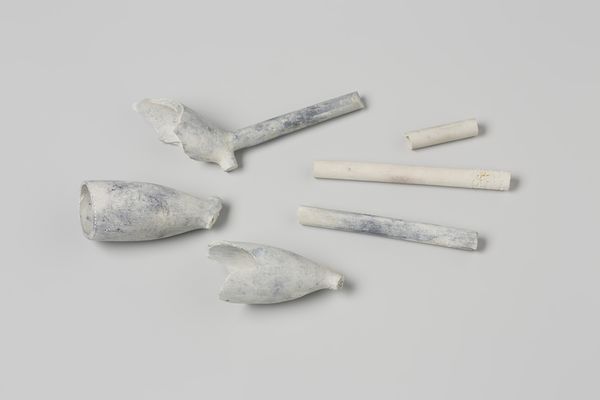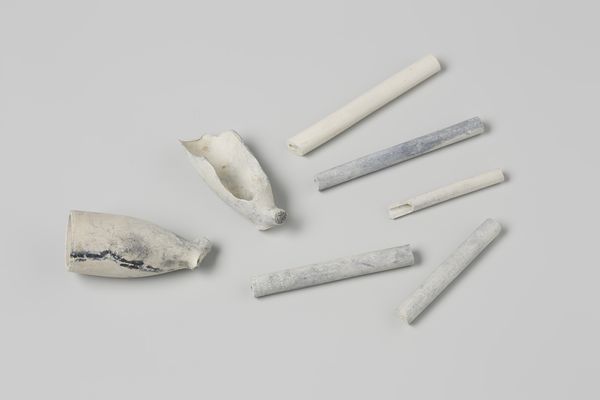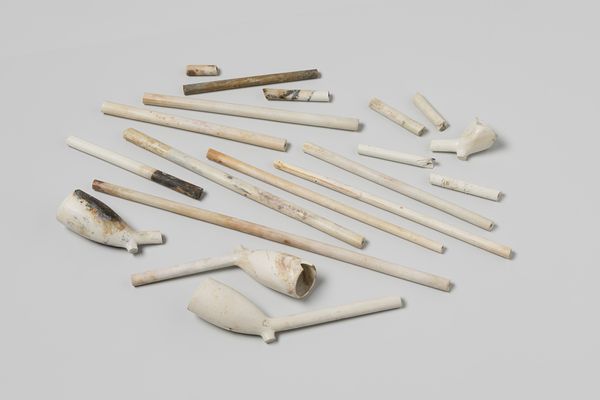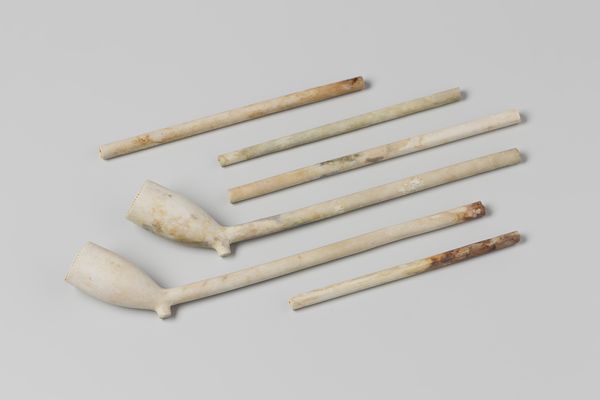
Fragmenten van pijpenkoppen en pijpenstelen uit het wrak van de Oost-Indiëvaarder 't Vliegend Hart Possibly 1700 - 1735
0:00
0:00
ceramic, earthenware
#
dutch-golden-age
#
ceramic
#
earthenware
#
stoneware
#
ceramic
Dimensions: length 5 cm, diameter 2.2 cm, length 1.3 cm, diameter 0.5 cm
Copyright: Rijks Museum: Open Domain
Curator: What we're looking at here are fragments recovered from the wreck of the Dutch East India Company ship 't Vliegend Hart. The assemblage dates roughly from 1700 to 1735 and includes sections of pipe heads and stems made from earthenware. Editor: They're like ghosts, aren't they? Pale and broken, strewn across a grey sea. There's something mournful about their fragility, but also a simple, geometric beauty in their forms. Curator: Yes, their state reflects a particular moment in the colonial narrative. Smoking tobacco, although controversial at times, became interwoven with trade networks and colonial power dynamics. The VOC heavily regulated production. Editor: It is intriguing to examine the variation of white and brown in relation to the clay from which they came. There’s something compelling about their worn surfaces—the almost accidental marbling from years underwater. How the water altered their original sheen is interesting. Curator: These pipes would have been part of the daily lives of the sailors and traders. The design evolved from English models initially, however, Dutch pipe makers developed their own recognizable styles which then circulated globally, back and forth from the East Indies. Editor: Looking closely, I see each piece with different diameters of openings in these ceramic shapes. Some have been almost consumed from external deterioration. Each tiny section is like an artifact, isolated and beautifully damaged. Curator: Exactly. As relics of a shipwreck, they're not just fragmented objects; they are embodiments of an historical network that bound diverse people and places together. Their mundanity heightens, rather than diminishes, our appreciation for Dutch colonial expansion and it’s human cost. Editor: I think these fragmented pieces show just how much value time and place holds when analyzing artwork such as this, adding depth to any exhibition they inhabit. Curator: Yes, indeed, a single material object is embedded within history.
Comments
No comments
Be the first to comment and join the conversation on the ultimate creative platform.
